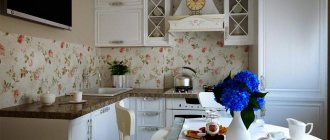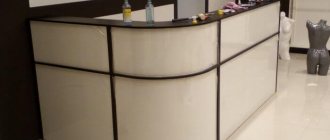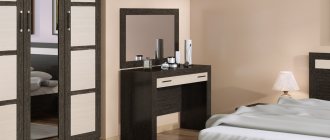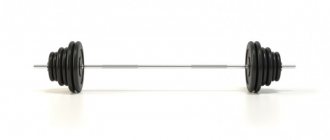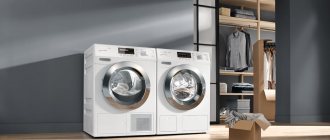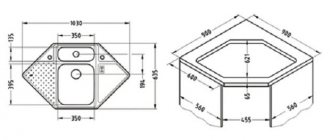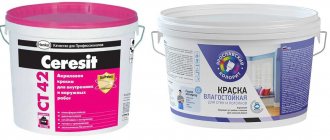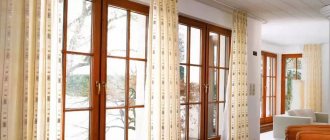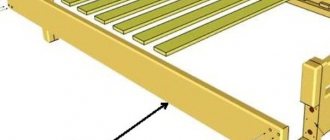The need to restore or repaint the decorative coating on plastic parts and PVC cladding arises much more often than it might seem at first glance. This could be the surface of metal-plastic veranda windows, the housing of home appliances, a soft inflatable boat, plastic body parts on a car, and even protective fabric covers. Painting PVC plastic is not particularly difficult, but on one condition, if you have special paint for PVC.
Film facades: pros and cons, comparison with other options
from February 9, 2014
Film facades are a popular modern solution for the front decoration of furniture: they are economical, varied in color, and allow you to imitate various surfaces. But sometimes buyers have distrust in the quality and durability of such furniture. Many people have the impression that these facades are covered with ordinary film, which can be bought at construction or hardware stores. To understand this mistake, you need to take a closer look at the production technology of film facades and their characteristics.
What are film facades? Production of facades with PVC film
Film facades are manufactured using modern technologies based on MDF boards (medium density fiberboard). In terms of their parameters, these boards are close to natural wood, but much stronger. They are non-toxic, do not emit harmful substances, and are environmentally friendly. An important property of MDF boards is that they practically do not absorb moisture.
Traditionally, shaped milling is applied to the facade of the slab using modern high-precision machines, ensuring the quality and clarity of the design. When making custom-made furniture, the design can be made according to the customer’s sketches.
The next technological stage in the production of film facades is the application of PVC film to the prepared elements. Film is a very durable material. Usually it has a thickness of 0.3-0.5 mm. When heated, it becomes plastic. It is this property of the film that is used when it is applied to facades using thermal vacuum pressing. In this case, the film lies evenly on the surface of the slab, easily filling all the milling recesses, and after cooling it retains its shape, holds firmly and for a long time.
The variety of patterns of PVC film is ensured by the fact that it accepts printing patterns well and is easy to emboss and dye.
Therefore, the film can be glossy, semi-matte, matte, pearlescent, with a metallic sheen, imitating various wood species, marble, leather, textiles and other materials. In addition, the film can be patinated and varnished.
Such a variety of designs allows you to use furniture with film fronts in any room, with any interior: warm solid colors are suitable for the bedroom, marble or enamel film for the kitchen, wood-look for the living room.
Of course, all the positive properties of film facades are preserved only with strict adherence to manufacturing and storage technology. If the product is manufactured using outdated equipment, in violation of the conditions of production, storage and transportation, there can be no question of quality: the film quickly peels off and loses color. Therefore, it is very important to purchase products from more or less well-known manufacturers that have proven themselves well in the local or national market.
Is it possible to paint laminated chipboards in a different color?
Laminated particle board is a chipboard lined with melamine or thermosetting polymer film. Additionally, the surface of the plate is varnished. The resulting coating gives the material the following properties:
- smoothness;
- moisture resistance;
- scratch resistance;
- improved appearance.
The smooth and moisture-resistant surface of laminated chipboard has low adhesion, so when painting the slab, the paint collects in drops. This does not happen when working with conventional chipboard because it has good wettability. This allows the paint to penetrate deep into the structure of the material and cover it with an even layer.
If you can't change the color of the board just because of the non-wettable surface, the question arises: is it possible to paint laminated chipboard after removing the cladding? Yes, matting a varnish coating is a popular way to improve its adhesion. In this case, there is no need to strip it down to the melamine or polymer film, much less remove the film itself. It is enough to go through sandpaper twice. The first time - with a coarser sandpaper (P60), the second - with a softer one (P150).
Advantages of film facades
The main advantage of film facades is their price. Furniture with them is relatively inexpensive compared to some other finishing options. Film facades have other advantages:
- a huge variety of colors and textures;
- durability;
- resistance to abrasion and cleaning agents;
- the ability to manufacture custom products of any size, shape, for example, curly, bent, etc.;
- high light resistance (to UV rays);
- environmental Safety;
- ease of care.
Whatever furniture you come up with for yourself, your plans can be realized with the help of film facades.
Disadvantages of film facades
Film facades also have disadvantages:
- peeling of the film under the influence of high temperatures and humidity;
- possibility of damage due to external chemical, mechanical influences, or the use of abrasive cleaning agents;
- impossibility of restoration of defects.
Manufacturers of kitchens with film facades strongly recommend purchasing a good hood - it extends the life of the cabinet facades located above the hob.
If the appearance of the film facades suffers greatly, you can always order new ones. Fortunately, their price is low. It is not necessary to change the furniture frames - you can only update the facades. If the facades are made from reliable, consistent manufacturers, you can re-order one or two elements from them at any time to replace the damaged ones.
Film, enamel or plastic - which is better?
Along with film finishing, enamel, acrylic or plastic coating is popular. At first glance, it is difficult for an uninformed buyer to determine the material used for the manufacture of furniture facades. How is film different from plastic and enamel? Which is better to choose? To answer these questions, you need to know the main features of these materials.
Plastic MDF facades. Plastic coverings of facades have a bright glossy surface. Such facades are resistant to mechanical damage, do not deform from exposure to moisture or high temperature, and do not fade in the sun. The colors are varied, but the palette is not as wide as that of film . Plastic facades are perfect for kitchens, bathrooms or hallways. The disadvantages include the higher cost compared to film facades, as well as the fact that handprints are clearly visible on the plastic. Restoration, as in the case of film, is impossible.
Acrylic facades. Coating furniture facades with acrylic is a new technology for us. This process is quite complicated, so furniture with acrylic fronts cannot be called cheap. Acrylic has an even smoother and glossier surface than plastic. This can be considered both an advantage and a disadvantage: the excessive shine of furniture, although beautiful, can be very tiring, and fingerprints will also have to be removed. Acrylic is environmentally friendly and does not contain harmful impurities. It is much more resistant to mechanical damage than plastic or film. Bright, rich color does not fade over time and does not fade in the sun. But acrylic facades cannot boast of a variety of shapes : they are only dull and even. If you need furniture of more complex shapes, you will have to make a choice in favor of film or painted facades.
Is it possible to paint plastic window structures?
Changing the color of plastic windows can at the same time be called a bold and original decision, the adoption of which requires from the owner of the room in which such transformations are planned not only the desire to change “something”, but also the emergence of a number of specific reasons and, of course, time for the competent organization of everything process. At the same time, such a procedure has a number of positive and negative sides, which you should definitely get acquainted with even before you purchase the necessary materials and begin to implement your plan.
Reasons for repainting windows
The need to change the color of plastic windows may be necessary in a number of cases:
- yellowing or the appearance of a gray tint on the windows after some time of use, and as a result, any scratches and mechanical damage become visually noticeable on the surface of the frame;
- painting plastic windows will be the most rational solution in a situation where a white window does not fit into the interior of the room after renovation, and installing a new double-glazed window in the near future is not included in the owners’ plans.
Advantages of painting plastic windows
The list of positive aspects of using paint emulsions to change the color of plastic windows includes the following items:
- firstly, painting allows you to change the color of PVC windows both outside and inside ;
- secondly, after the coloring emulsion has completely dried, a kind of protective film is formed , which helps to extend the service life of the profile;
- thirdly, if the work is carried out independently , then this type of window transformation is characterized by a fairly low cost ;
- fourthly, for painting windows indoors and outdoors, you can choose different shades and types of emulsions .
Disadvantages of painting plastic windows
The idea of painting white plastic windows has a number of negative aspects, namely:
- painting plastic windows is a rather painstaking and lengthy process consisting of several stages;
- in the case of using low-quality coloring materials , the color layer after drying becomes sensitive to any mechanical stress and begins to peel off;
- When applying paint with a brush, all movements must be performed without haste. The more uneven surfaces you leave, the faster your plastic frames will become covered with a layer of dust;
- To obtain a high-quality result, it is important not only to know how to paint plastic windows, but also to create equally correct conditions for drying - to protect only the painted surface from dust and various types of contaminants. And this is not always possible, since any repair work is accompanied by a characteristic disorder.
Features of caring for film facades
Caring for film facades is really easy. They should be wiped regularly with a damp soft cloth and any non-aggressive liquid detergent.
In order for furniture facades with PVC film to serve for a long time without losing their performance properties, it is recommended to follow a few simple rules:
- do not expose furniture to heat above 70°, do not place it near an electric stove, heaters,
- lighting fixtures, etc., to avoid film peeling;
- do not expose film facades to cooling below -15°, prolonged exposure to moisture or strong mechanical stress;
- Do not use abrasive, aggressive agents, solvents or liquids containing chlorine to clean facades.
If you treat furniture with film fronts with care, it will delight its owners for a long time with its bright colors and smooth surface.
Source: www.domfront.ru
Types of coatings
Kitchen fronts are the front parts of cabinets with doors and drawers. They can be solid or prefabricated, with swinging, sliding, lifting structures or accordion-folding ones. When choosing a kitchen set, first of all, pay attention to the physical characteristics of the material: moisture resistance, fire resistance, strength, etc. However, over time, any product loses its former attractiveness due to long-term use, sunburn, and mechanical damage. Then the question arises, is it possible to update the kitchen façade with your own hands? Before you start work, you should understand the features of the material from which the facade is made.
- Kitchen furniture made of wood attracts with its environmental friendliness and luxury, and also fits perfectly into classic and modern interiors. In order to preserve the original appearance of the product, special care and periodic restoration are required so that pests do not destroy the wood, and the doors do not become deformed due to moisture.
- Laminated chipboard is an inexpensive option, but completely impractical. Chipboard has a loose structure, which causes the material to swell in a humid environment.
- MDF facades are the most popular and versatile due to the durability of the material and a wide selection of colors. MDF facade panels can be either simple, flat, or rounded and asymmetrical.
- Plastic has the longest service life. It is applied to an MDF panel, sometimes chipboard. Such facades are not afraid of moisture, steam, temperature changes and aggressive household chemicals. Painting them is the most difficult, since it is difficult to select the necessary consumables.
- A set with glass inserts looks rich and luxurious, and never goes out of style. Glass is usually inserted into an aluminum profile or MDF panel, although there are also frameless structures, where the entire load falls exclusively on high-quality and durable fittings. To update the facade, you can use stained glass paint, with which you can create a unique pattern or design.
Features of the interaction between PVC and CM
The tenacity of KM with a plastic base is the quality that first of all draws attention to. PVC is characterized by a hard, dense structure and a slippery surface. Such surface features reduce adhesion to paint.
In addition, you need paint for PVC plastic that has the following technical characteristics:
- resistance to interaction with water;
- coating strength;
- resistance to various mechanical damage;
- tolerance to direct sunlight;
- color fastness;
- the composition is harmless, components harmful to health are not released after drying;
- resistance to temperature fluctuations;
- long service life;
- a range of shades and the ability to create different textures on plastic.
Most often, painting PVC is done independently at home, so you need paint that is easy to work with.
What requirements must the paint meet?
High adhesion is one of the main requirements that paint and varnish materials included in this group must meet. Plastic products have a sliding and smooth surface, which distinguishes them from other materials such as wood. Also, the distinctive features of plastic include a solid structure of high density. For this reason, the paint must have a high degree of adhesion to such a surface.
The following characteristics are no less important:
- water resistance;
- resistance to temperature changes;
- absence of toxic substances in the composition;
- color preservation throughout the entire service life;
- protection from sun rays;
- resistance to mechanical influences.
Ease of application of the composition is another property that plays an important role. After all, craftsmen often carry out painting at home on their own.
KM polyurethane-acrylic composition
The water-based polyurethane-acrylic composition for painting PVC has all of the above characteristics. The manufacturer offers PaliPlast RP 2040 base for use. This is a semi-matte acrylic with a base composition for PVC in white, which is later tinted to the desired color.
The result of the work will be a uniform coating that is not subject to deformation. CM dries quickly. Additives are added to the composition, which allows you to create different textured coatings. You can add pigments yourself and get the desired shade. The color is selected from 2000 shades proposed by the manufacturer.
There are traditional design options in color and non-standard solutions: glitter is introduced into the composition, a metallic color is selected, and a pearlescent coating is applied. This painting of a PVC profile will add uniqueness to the building or its facade.
The coating will last at least 10 years with daily use. Since the paint is non-toxic, it can be applied even in rooms with poor ventilation.
The polyurethane-acrylic composition creates molecular adhesion on the plastic, which allows you not to remove the gloss from the surface being painted, but to apply the material on top. It is important that the coating will be of the same quality wherever the PVC is painted: at home or in the production workshop.
How to paint furniture with chalk paint?
To achieve this effect, we need to paint the entire object with chalk in the chosen color, leave it to dry, and then apply a second color - also to all surfaces. But this time, wipe down the furniture with a sponge before the paint dries well (as described above); at the end we apply dark colored wax.
Interesting materials:
How to make polyester softer? How to get a policy for a foreign citizen? How to make shelves in a dressing room with your own hands? How to make full screen mode in undertail? How to make full screen mode in Google Chrome? How to make full screen mode in Need For Speed Most Wanted 2012? How to do a complete laptop cleaning? How to completely clean your computer? How to do a complete PC clean? How to make a full backup of your phone?
Stages of surface preparation for applying paint
To avoid painting doors, windows or window sills, any plastic surface is pre-prepared. Preparatory work is done in stages:
- Objects are removed from plastic structures that are attached to it and will interfere with painting. These are blinds, mosquito nets, curtains and ebbs;
- Use compressed air to remove dust from the plastic;
- the surface is thoroughly cleaned of grease stains and mechanical impurities;
- construction tape is needed to cover rubber seals on windows and various fittings so that drops of dye do not accidentally fall on them;
- The glass is covered with plastic film or newspaper;
- At the stage of cleaning and degreasing plastic, special activators and cleaners intended for plastic are used. Before painting PVC, wipe it with a cloth soaked in such a cleaner. After this, wait at least 5 minutes and a maximum of 10 minutes for the surface to dry and for the applied composition to evaporate. Next comes the painting of PVC;
- if the plastic is scratched, there are roughness or unevenness on it, then all defects are removed with putty. The surface is puttied, sanded with fine-grain sandpaper, and primed. All the work is not complicated and can be done independently, but if you are not sure, then it is better to turn to the experts.
PVC painting technique
PVC dyes are applied to the surface using a spray gun. First, the polyurethane-acrylic CM is completely prepared: pigment is added and mixed until a homogeneous composition is formed. Tinting is carried out before painting itself. The viability of the dye after mixing with the hardener is confirmed for 2 hours. After this, the spray gun is filled with it by passing it through a funnel filter.
When a factory container of paint is opened, a film is often visible on its surface. It must be removed and not mixed with the dye. The film composition has solid insoluble particles and if you do not remove them, the spray gun will constantly clog.
The consistency of the paint resembles thick sour cream. Thick material is diluted with water (no more than 10% is added). Viscosity is checked with a VZ-6 viscometer. Recommended viscosity: 30 sec.
Advice: if the polyurethane-acrylic material froze during storage, then after it was thawed, all technological characteristics were lost. Therefore it is not suitable for use.
The work is carried out in dry, warm weather. The thermometer should show at least +5 o C, humidity no more than 80%. But not at high air temperatures.
CM application thickness: 80-120 microns. After application, the dye does not flow off a vertical surface and adheres well. Usually one coat of coating is sufficient. But if necessary, the coloring can be repeated. The second layer is applied at the moment when the previous one has become semi-matte. If the air temperature is +18 o C, then it is enough to wait about 20 minutes between applying layers.
After 2-3 hours the coating becomes dense. After 48 hours the material is completely dry.
In specialized industrial workshops, plastic products are dried at a temperature of +50 o C. This technology is called forced drying. The paint dries completely in 2 hours.
Metallic coating technology
The metallic effect on plastic is achieved in 2 ways:
- the process proceeds with the application of 2 layers: the first layer is paint with a “metallic” effect with a thickness of 60-80 microns; the second is a colorless varnish for PVC with a thickness of 60-80 microns. Between application of the second layer, a drying time of up to 4 hours is maintained.
- one layer is applied. Metallic paint is pre-prepared. It contains 20% colorless varnish. The plastic is covered with a material 60-80 microns thick.
How does staining happen with special equipment?
Undoubtedly, the quality of surface preparation before painting affects the appearance of the finished coating. Since the PVC surface itself does not hold paint and varnish mixtures very well, it will need to be carefully pre-treated. In order to ensure reliable adhesion of the applied layer to the surface of the product, you will need a special mixture - a primer for plastic. It can be found in specialized stores among other paint and varnish products.
The entire process of painting polyvinyl chloride by specialists (from processing the surface to applying a layer of paint on it) step by step is as follows:
- At the very beginning, you should inspect in detail the surface of the part or product. There should be no traces of dirt on it. If there are any, the plane will need to be cleared of them and then dried.
- When the product is clean and dry, you can apply a special primer to it. It increases the adhesive properties of materials. This mixture is applied to a cleaned and dry surface of the object by spraying, but you can also practice priming by wiping the surface. After treating the product with a soil mixture, it should be set aside until the top layer has completely dried.
- In the future, in order to ensure excellent adhesion of the coloring composition to the plastic, it will be necessary to create optimal environmental conditions: temperature within the range of +5 - +18⁰С; air humidity no more than 80%. Before proceeding to the next stage, treating the surface with a coloring composition, you need to make sure that the temperature of the object and the mixture is approximately the same. After this you can start painting.
- Spray painting of polyvinyl chloride should be carried out in 1 layer. Its optimal thickness should be in the range of 60-120 microns. If the indicator is less than the minimum permissible value, the wear resistance of the coating will suffer. If the indicator is higher, the appearance of the coating may change as a result, which is due to the longer drying of the layer.
After the finishing of the product is completed, it can be left to dry completely at a temperature from +18⁰С to +60⁰С. The duration of the period for complete drying of the coating directly depends on environmental conditions, as well as on the thickness of the layer of applied composition.
So, for example, only about 2.5-3 hours will be required for a layer 60-120 microns thick to completely dry if the room is +50⁰C and 65% humidity. And in other conditions (humidity 45-50% and temperature 18-20⁰C) drying of the same layer will last 9-10 hours. After the top layer has dried, the product should not be used yet, since it will take about 5-6 more days for the surface to dry completely. And sometimes more. During this period, it is important not to change the environmental conditions in which the painted object is located. It will be ready for use only upon completion of polymerization.
KM in aerosol cans
A small plastic object can be painted with CM in an aerosol. Since the entry of air into the container is completely excluded, there can be no film on the CM.
Pros of using spray paint:
- high degree of tenacity with plastic;
- The dye is easily applied in all hard-to-reach places;
- small parts are covered in an even layer;
- no additional painting tools will be needed;
- the can can be easily delivered to any distance.
This method of painting is often used for PVC surfaces in car interiors. In order for the coating to be smooth and evenly distributed over the entire area, experience is still needed. Pre-training won't hurt.
Features of paintwork for boats
Painting materials intended for coating boat hulls come in several types. Each of them is designed to cover a specific material and has special properties.
| Kinds | Peculiarities |
| Polyurethane | Strong and durable compounds that are applied to the body using a spray gun. To make the coating durable, polyurethane compounds are applied in 2 or 3 layers. |
| Enamels on oil | Oily enamels are used for painting wooden or plastic vessels. Oil compositions fit well only on a layer of suitable primer, which provides the best adhesion of the materials. If aluminum boats are painted with oil-based enamel, you should choose a paint that does not contain lead particles. |
| Epoxy | Epoxy paints are used to cover the bottom. The basic element of paint is epoxy resin. It is not applied to aluminum hulls, but when painting wooden or PVC boats, this type of material is in demand. Resins create a protective layer with a durable, elastic coating. |
| Alkyd | Alkyd paints exhibit average coating strength. The advantages of alkyds are the presence of bright, varied shades, as well as the ability to apply paint to the surface in any available way. |
| Acrylic | Acrylic compounds are durable coatings that are resistant to various environmental influences. |
When preparing for painting, special attention is paid to the choice of primer coatings. They are responsible for adhesion between layers and contribute to the creation of a more durable layer of paint and varnish material.
Additional protection
Acrylic dyes have good adhesion to PVC. But you can increase the service life of the coating by additionally protecting it with a glossy water-based plastic varnish. In addition, the product acquires shine and a beautiful appearance.
This additional protection is relevant for window sills and windows in the kitchen. The impact of aggressive factors is reduced.
The protective layer is applied with a brush. There are no difficulties in the work, so you can apply the varnish yourself.
If the window sill or plastic pipe is located close to the fire source, then they are covered with fire-retardant CM. These are compositions intended for coloring metal.
Consolidate the result
Acrylic paints after processing PVC products are able to stay on the surface for quite a long time. But you need to use a gloss varnish to provide additional protection. Such materials are created on a water basis and play the role of a decorative coating, making the product shiny. After painting, PVC plastic looks attractive.
Such compositions are excellent for processing almost any PVC product that has already been painted previously. Especially in rooms where the surface is constantly negatively affected. Applying varnish does not require additional skills; it is enough to use a regular brush or aerosol.
Review and application of paints on plastic (2 videos)
Different paints for PVC (24 photos)
PVC painting details
Before painting PVC, the required volume of dye is calculated. The area to be painted is measured. Knowing the consumption of paint, which is indicated by the manufacturer on the can, the sales consultant will help you calculate how much paint you need to purchase.
Despite the high price of polyurethane-acrylic CM, it is economically beneficial. Since one layer of paint is enough, which means the material consumption is small. The coating is durable, thus the costs will be justified over the years of service.
The coating will last a long time if the dye is applied in compliance with the technology.
Polyurethane-acrylic compounds are environmentally friendly and do not contain components hazardous to health. Therefore, they are used in children's rooms, hospitals, and catering buildings.
Source: kraskistroi.ru
Required materials and tools
Before painting plastic panels, it is necessary to prepare the surface for painting, prepare materials and tools, including:
- Cleaner for plastic panels;
- Lint-free cotton fabric;
- Special paint for plastic;
- Spray gun;
- Protective gloves and respirator.
It is best to treat the surface with a high-quality and inexpensive cleaner. There may be traces of the lubricant that was used to coat it during manufacturing on the plastic. With the help of a cleaner, it is possible to degrease the material, remove dust and static electricity. This product is applied to lint-free fabric. It is used to treat the surface of the plastic. After cleaning the surface, you need to wait until it dries, and only then you can paint.
Many people believe that panels can be painted with a roller or brush. This is a misconception: only a spray gun can be used as a tool for applying paint, and plastic can be painted using the spray method.
On video: types of PVC and MDF panels.
